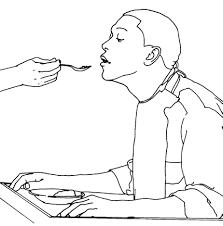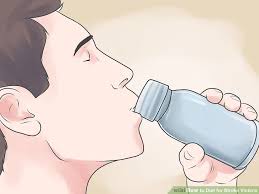EATING, SWALLOWING AND TOOTH /MOUTH CARE FOR A PERSON LIVING WITH STROKE – HOME CARE /SUPPORT
 Ad Adams Ebenezer is a co-founder of the Stroke Association Supportnetwork (SASNET) Ghana. He is also a board of director of the World Stroke Organization.
Ad Adams Ebenezer is a co-founder of the Stroke Association Supportnetwork (SASNET) Ghana. He is also a board of director of the World Stroke Organization.
Adams has been actively involved in the testing and launching of the Post Discharge Stroke Support (PDSS) around the world, collaborating with teams from South Africa and the United States.
EATING, SWALLOWING AND TOOTH /MOUTH CARE FOR A PERSON LIVING WITH STROKE – HOME CARE /SUPPORT
HOW CAN I HELP THE PERSON EAT?
The person must do the following:

- Sit up for all meal.
- Sit up straight.
- Keep the head slightly forward.
- Look at the food.
- Rest arms on a table.
- Keep the feet flat on the footrest of the wheelchair or on the floor.
- Take small bites and sips.
- Move the chewed food to the middle of the tongue before swallowing.
- Drink from a full glass or use a straw to prevent the head from tipping back.
- Sit up for at least 20-30 minutes after eating for food to be digested.
VERY IMPORTANT:
If the person often coughs or chokes when eating, ask to see a speech therapist. He/she can check whether the person can swallow food and drink safely, and give the necessary advice to improve swallowing.
The carer must do the following:
- Sit up for all meal.
- When standing, put your foot on a low support, such as a wooden block or low bench.
- Always keep your back straight; don’t bend it.
- Use your arm closet to the person to support his/her head.
- Place food between the teeth, on the stronger side of the person’s mouth.
- Give thick fluids and food with a smooth Yogurt, custard and thick soups are easiest to swallow.
VERY IMPORTANT:
- Don’t let the person’s head tip to the side or back.
- Don’t let the weak arm dangle or fall off the table, armrest or tray.
- Don’t let the foot slip off the footrest of the wheelchair.
HOW CAN I HELP THE PERSON DRINK?

- Put your finger on the person’s cheek, chin and lower jaw to help him/her close the lip or mouth. Take care not to tilt the head back.
- When using a straw, always out it on the strong sides of the mouth against the check.
- If the person cannot drink from a cup or use a straw, use a syringe (injection, consult a nurse or speech therapist first) without the needle to put fluid into the mouth.
- Pace it on the strong side of the mouth, against the cheek. Squirt fluid in the direction of the cheek.
HOW CAN I HELP THE PERSON BRUSH HIS/HER TEETH?


- Let the person sit in front of a mirror.
- The person must sit up straight.
- Keep the head upright.
- Let the weak arm rest on a table or on the edge of a
- Stand behind the person and look in the mirror.
IMPORTANT : Person living with stroke and their carers could also receive answers to the above stated problems by signing up to the Post Discharge Stroke Support(PDSS) Program by the Stroke Association Supportnetwork-Ghana (SASNET-GHANA).
E.S, S., & J.S, V. (2015). Stroke Care at Home. Western Cape South Africa: Center for Rehabilitation Studies Stellenbosch University.
http://:care.sasnetghana.org online or email: info@sasnetghana.org
Helpline + 233594989496 or on WhatsApp +233262463986
Sign up to Ask Dr Charway –Felli Platform for more support .
Register for free support online here : care.sasnetghana.org/ask-charway/
Stroke Association Supportnetwork-Ghana (SASNET-GHANA) Rebuilding Lives After Stroke.

